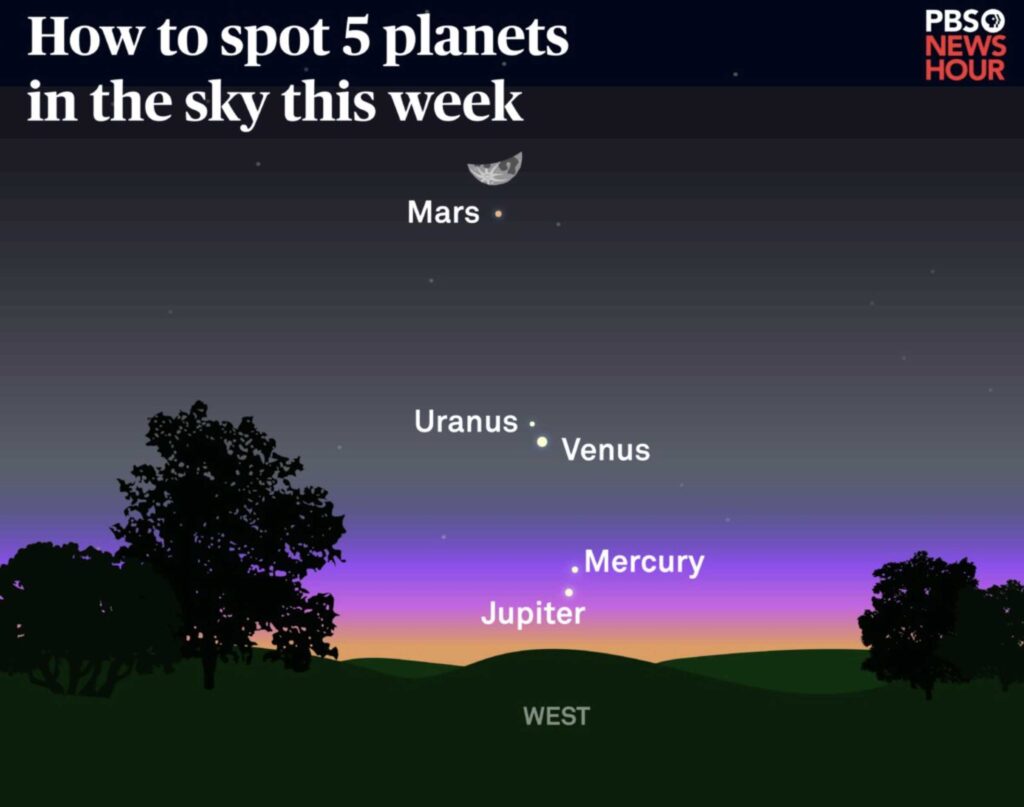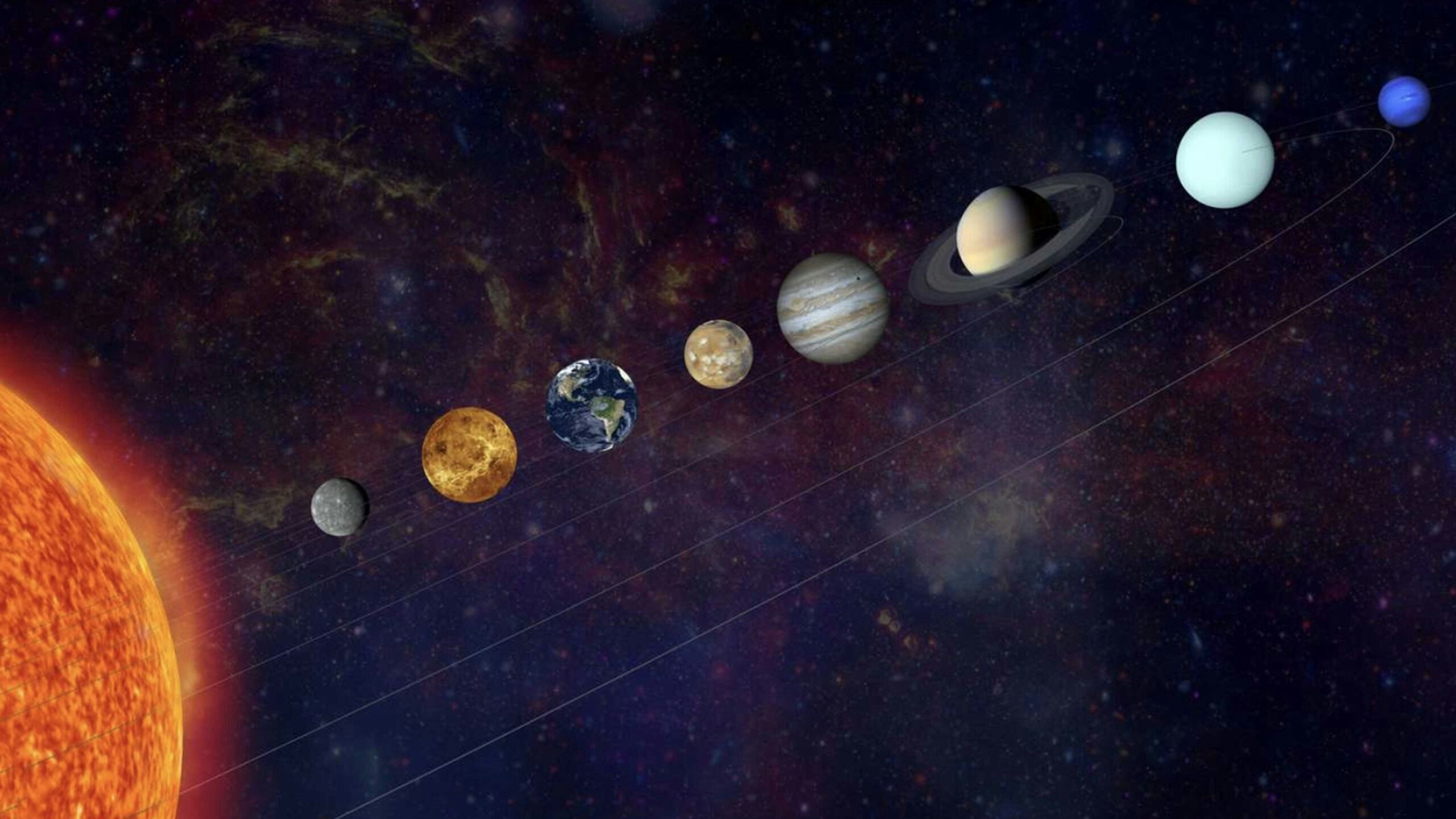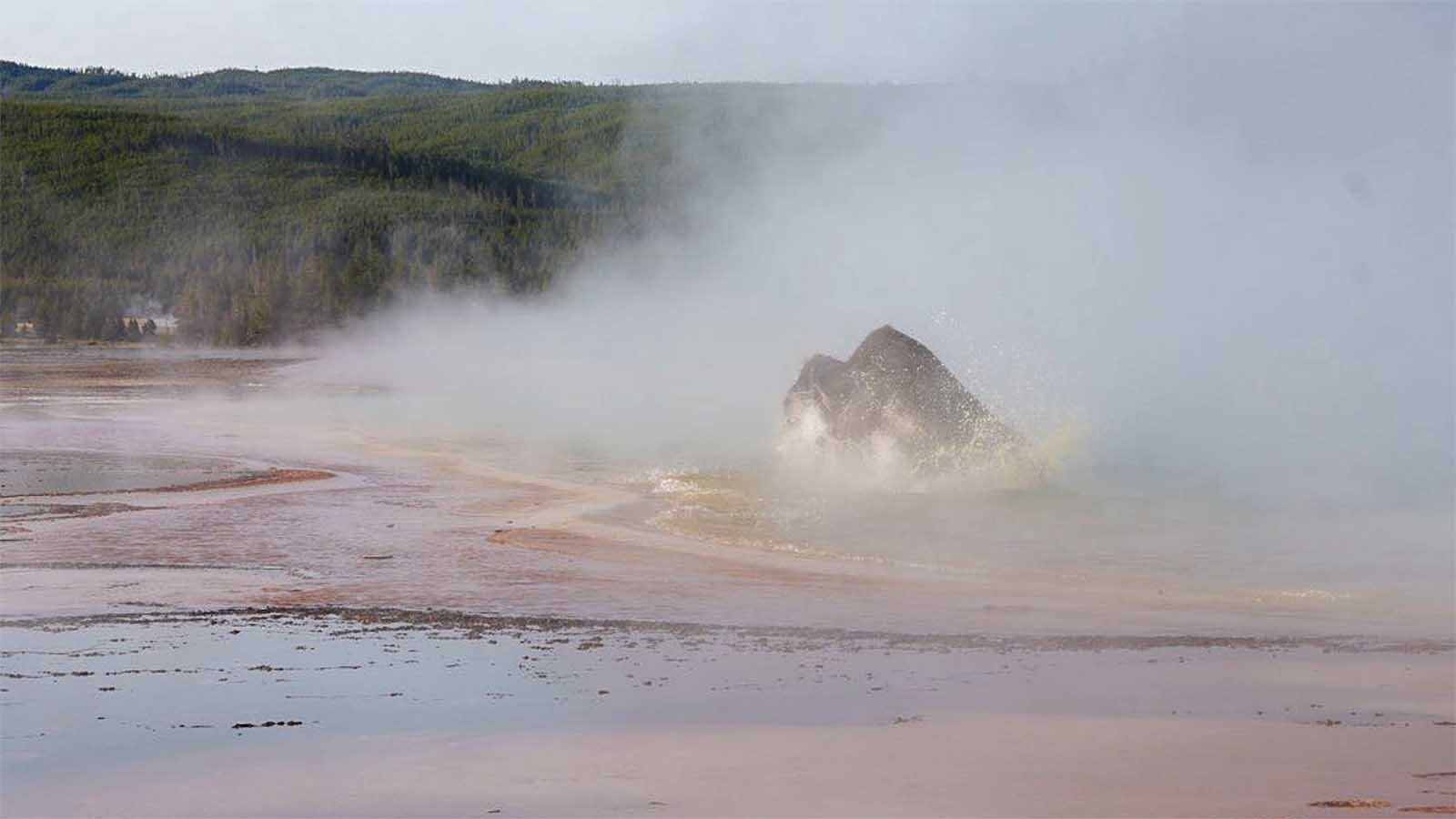After last week’s aurora borealis light show, anything short of the moon exploding may seem anti-climactic, but the aligning of five planets isn’t something that happens every day (or night).
Tuesday evening was the best time to view Venus, Mars, Jupiter, Mercury and Uranus lining up, but the spectacle happens every night this week.
“If you go outside, right at sunset, right after the sun goes down and look west, you’ll see these planets strung out in a line extending about 50 degrees or so,” NASA’s Bill Cooke said. “Anybody who can see the sun will be able to see it.”
Cooke added it’s best not to stare directly at the sun.
The Lowell Observatory in Flagstaff, Arizona, has some specific directions.
“Jupiter, Venus and Mars will be easy to spot, as they shine very brightly. Mars will be located closest to the Moon, distinguishable by its reddish glow, and Venus will be one of the brightest objects in the sky. Mercury and Uranus will be a bit more difficult to spot, so this will be a great time to use binoculars or a telescope if you have them on hand.”
A Rarity
A planetary lineup of five planets is fairly rare, especially when Uranus is involved. Mini alignments (three or four planets) are more common but a five-planet alignment like this won’t happen for another 20 years.
Although you can see the spectacle without equipment, it’s probably best to find some binoculars or a telescope, especially when it comes to Uranus.
“I never miss the opportunity to see Uranus,” noted Wyoming outdoorsman and skywatcher Paul Ulrich told Cowboy State Daily. “But to see Uranus alongside four other planets like this, it will be unbelievable.”
When And Where
The best time to view the site is shortly after sunset and it won’t last long. You’ve got a window of about 30 minutes.
Look on the western horizon and you will see the planets start to appear beneath the crescent moon.
“The planets will look like pearls on a necklace,” Cameron Hummels, a computational astrophysicist at the California Institute of Technology, told CNN.






